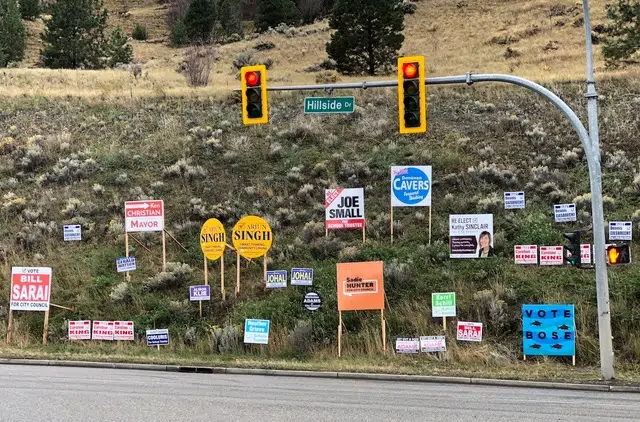
Announcing this year’s ‘Best Election Signs’ winners
WITH ALL THE ISSUES to talk about in the civic election — parking, businesses taxes, dirty needles, the performing arts centre, housing and so on and so on — we seem to be worrying a lot about election signs.
Should they be banned? Should they be restricted to certain areas? Are some of them actually illegal?
Well, yes, to the last question. The fact that some signs don’t include contact information was brought up this week. I’ve noticed it as more and more of them have been planted.
It matters not to the rest of us but Elections BC takes these things quite seriously. Somewhere on the sign, there must be a line that says it is “authorized by” with the name of the financial agent (very often, this is the candidate) and a phone number, mailing address or email address.


